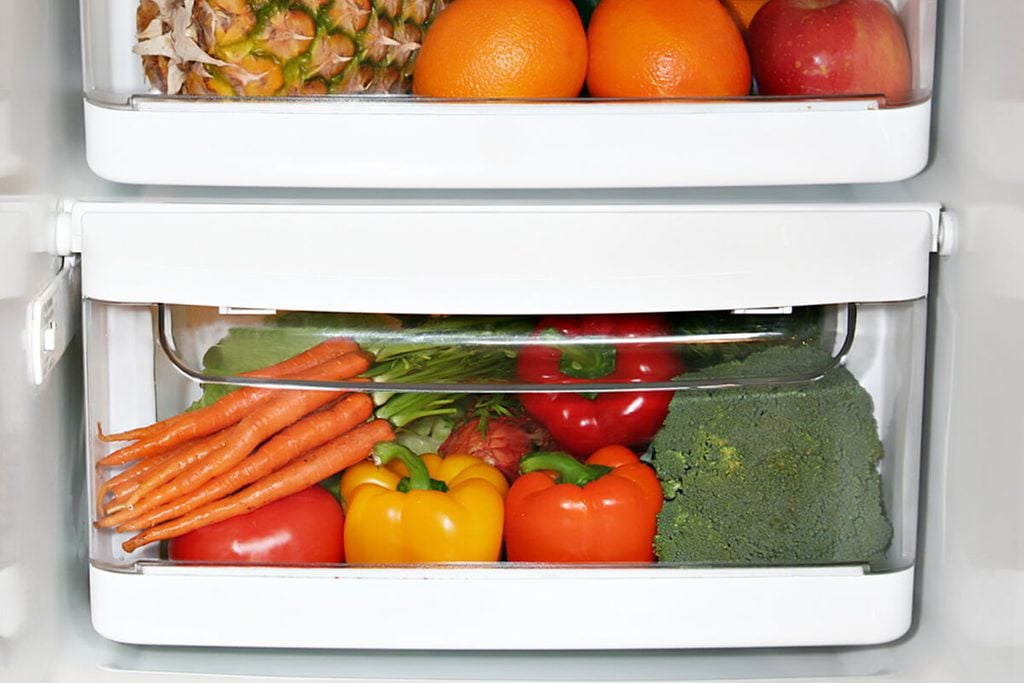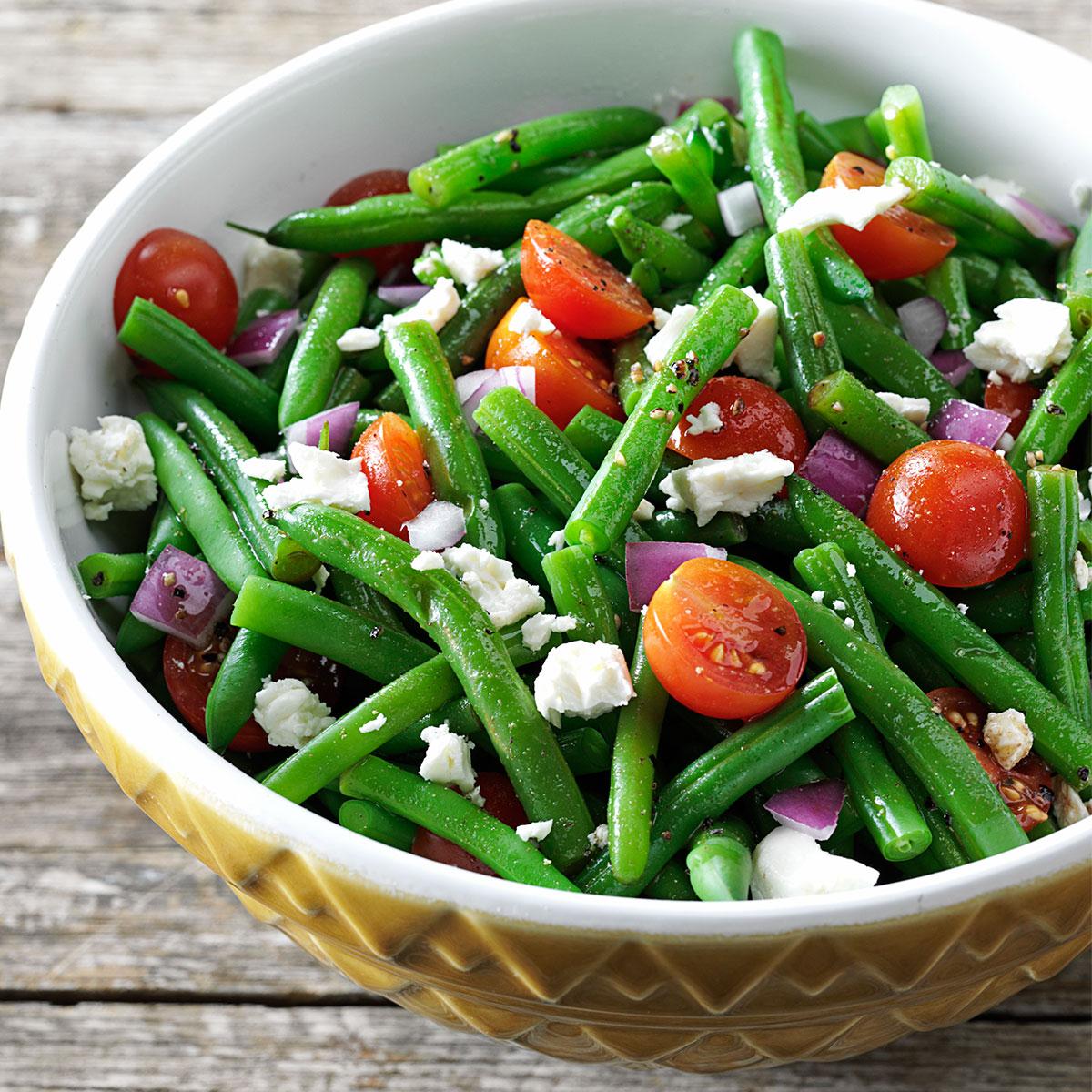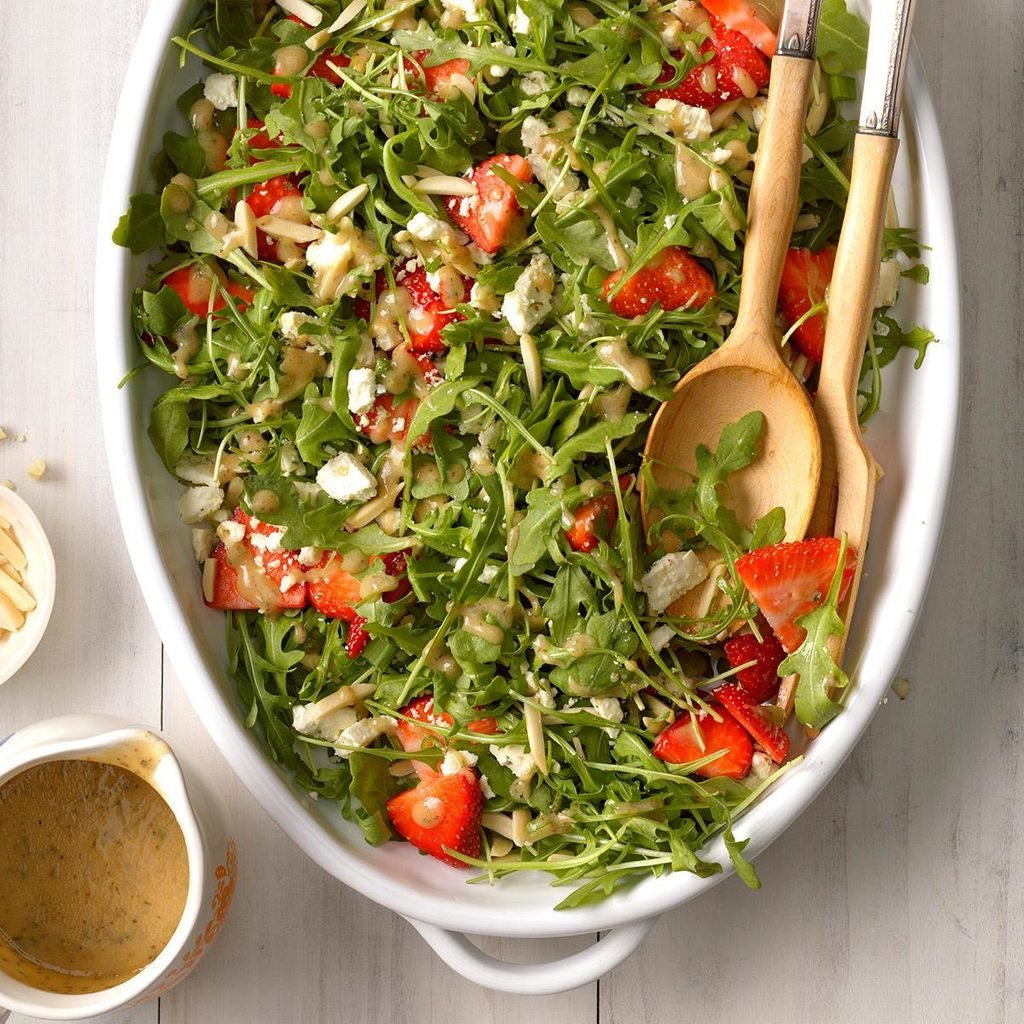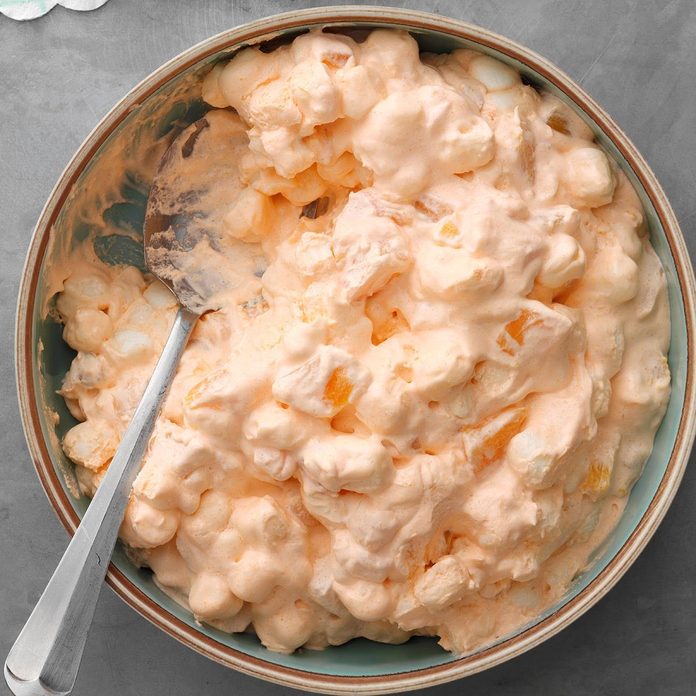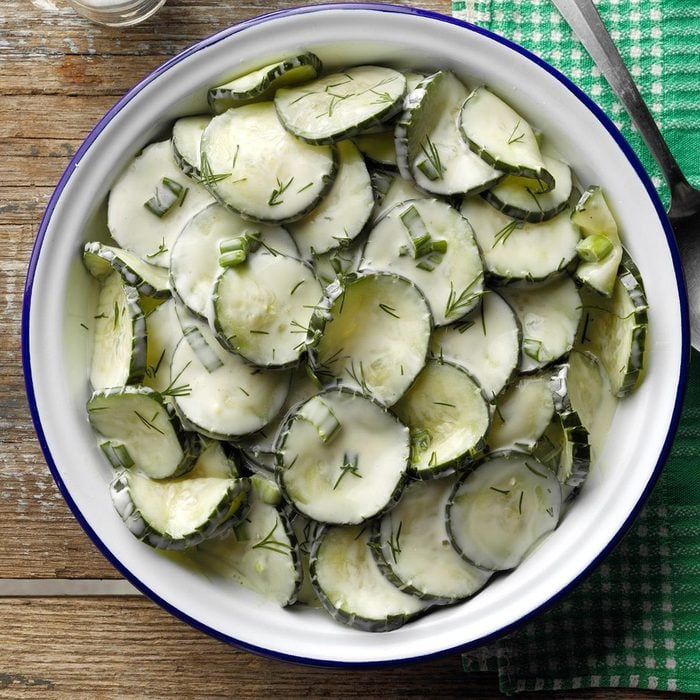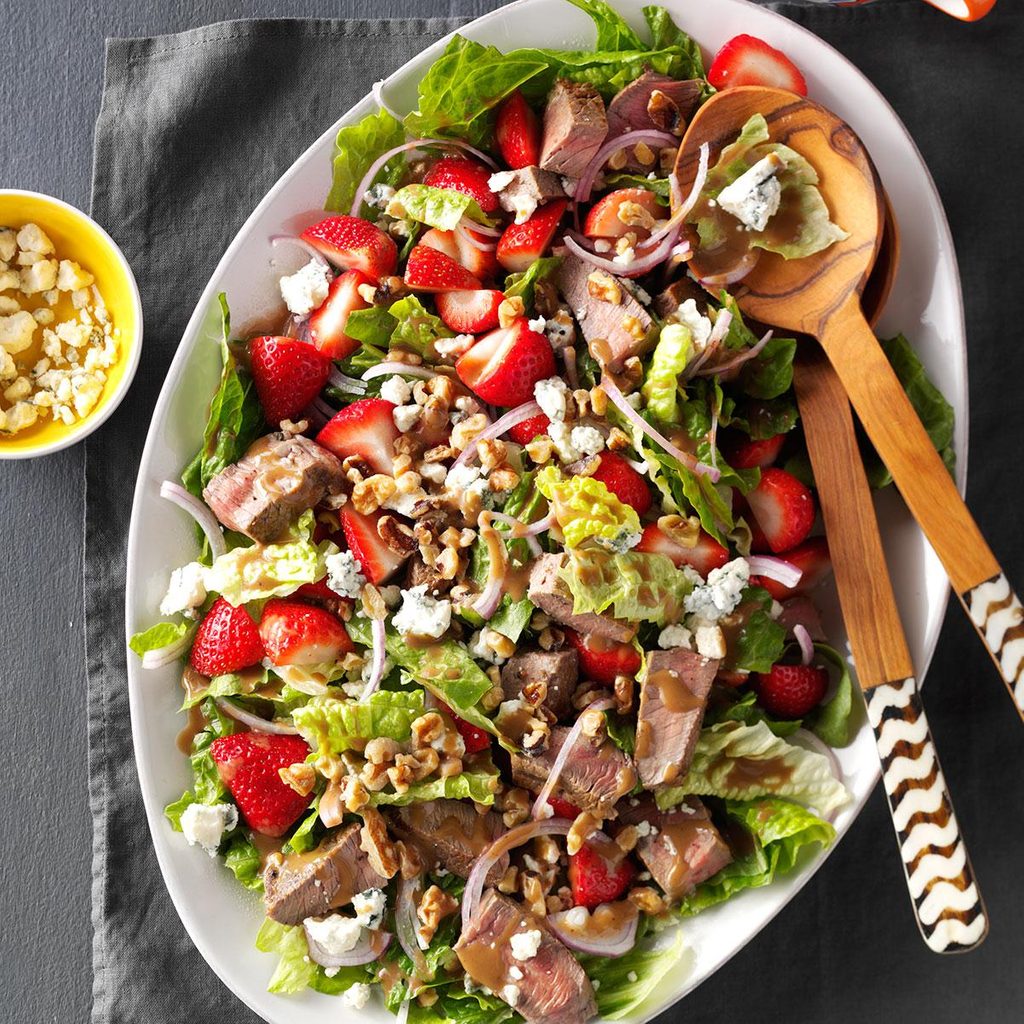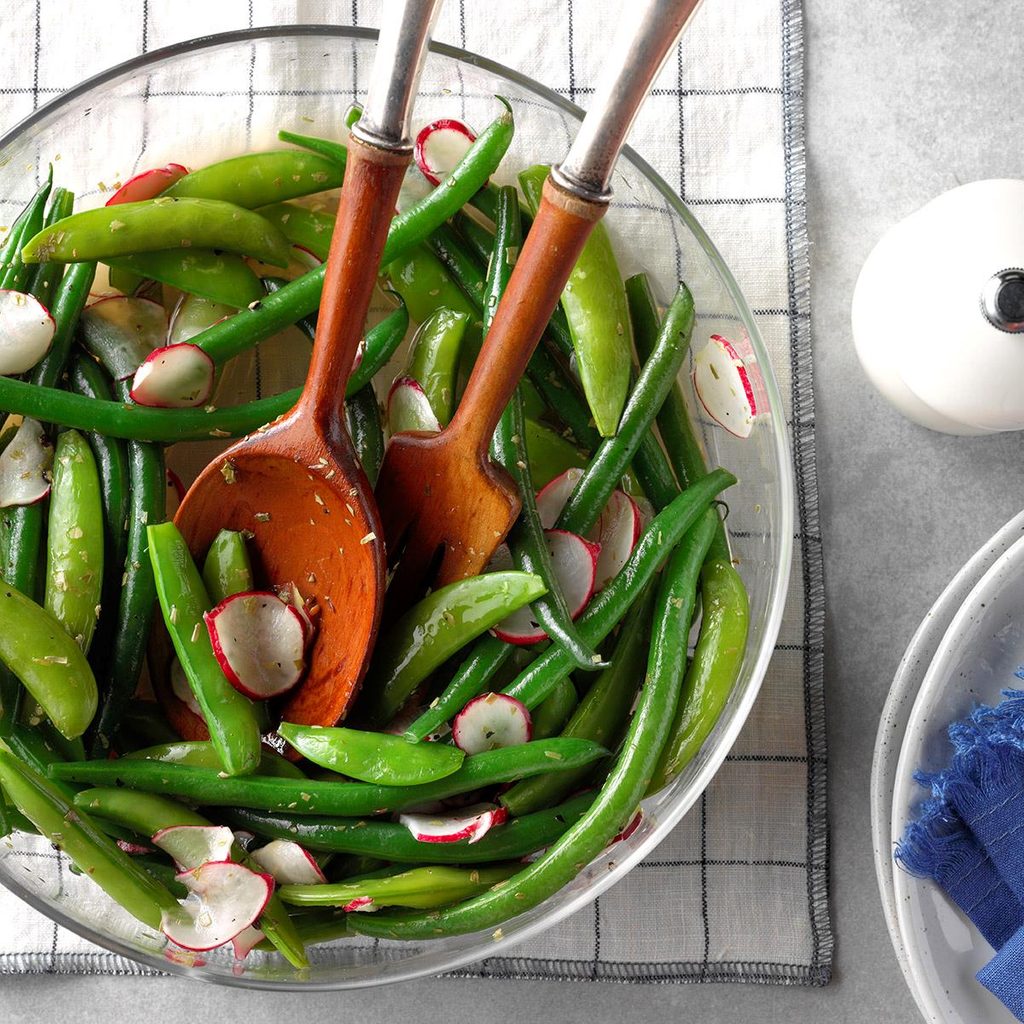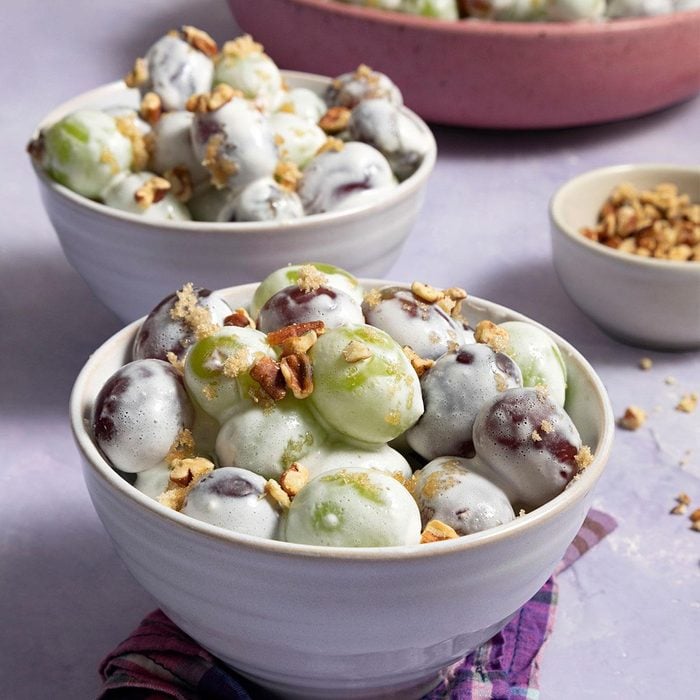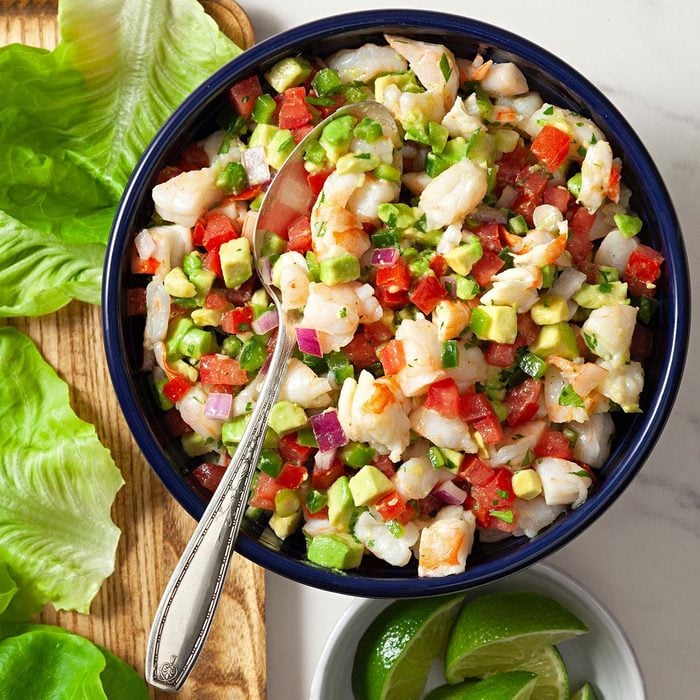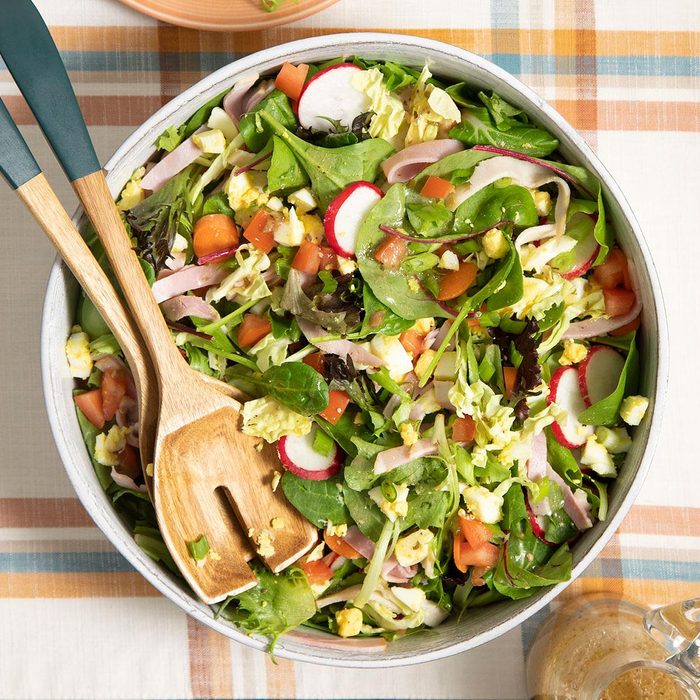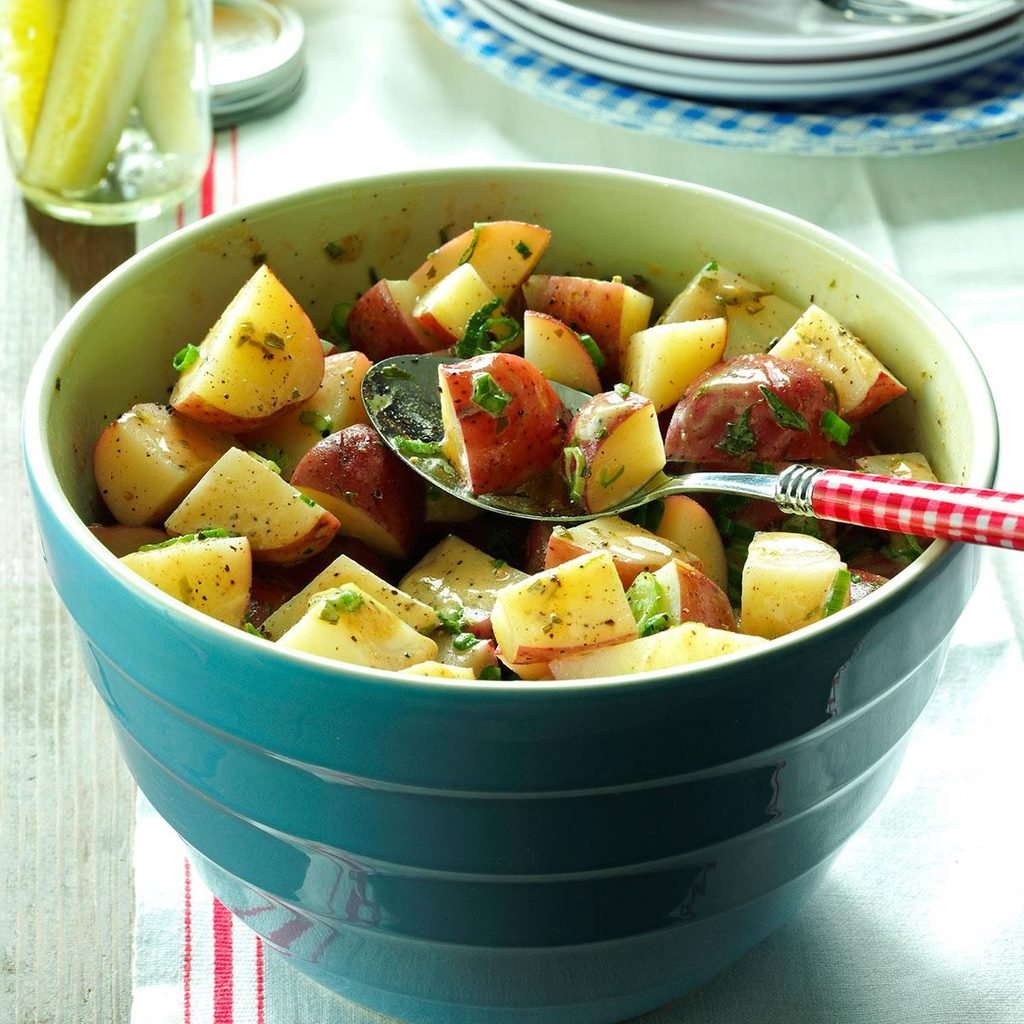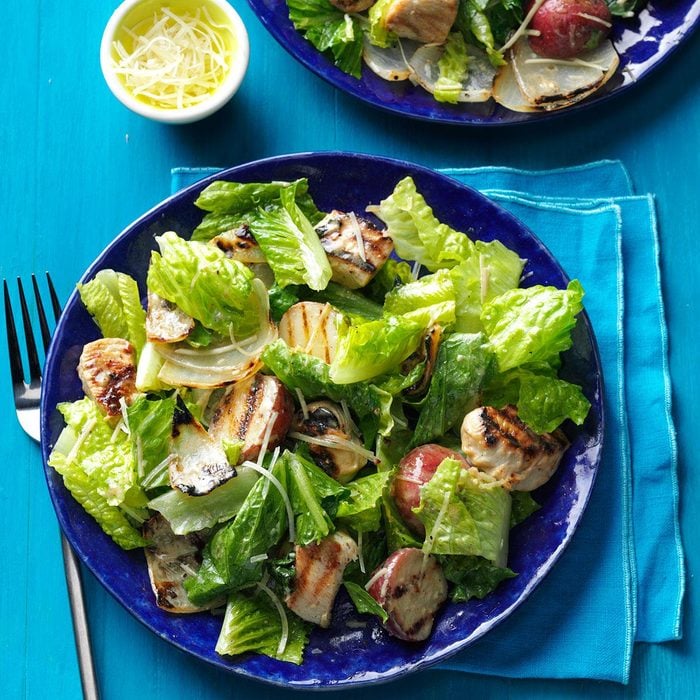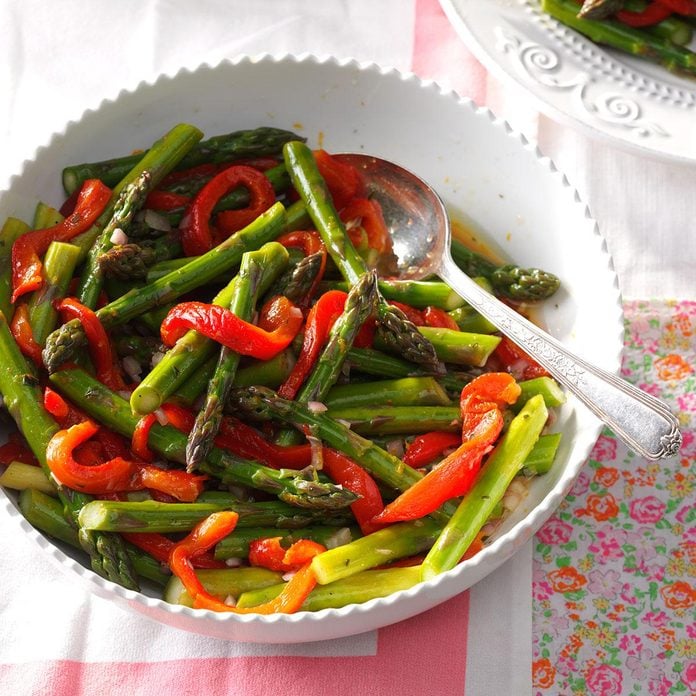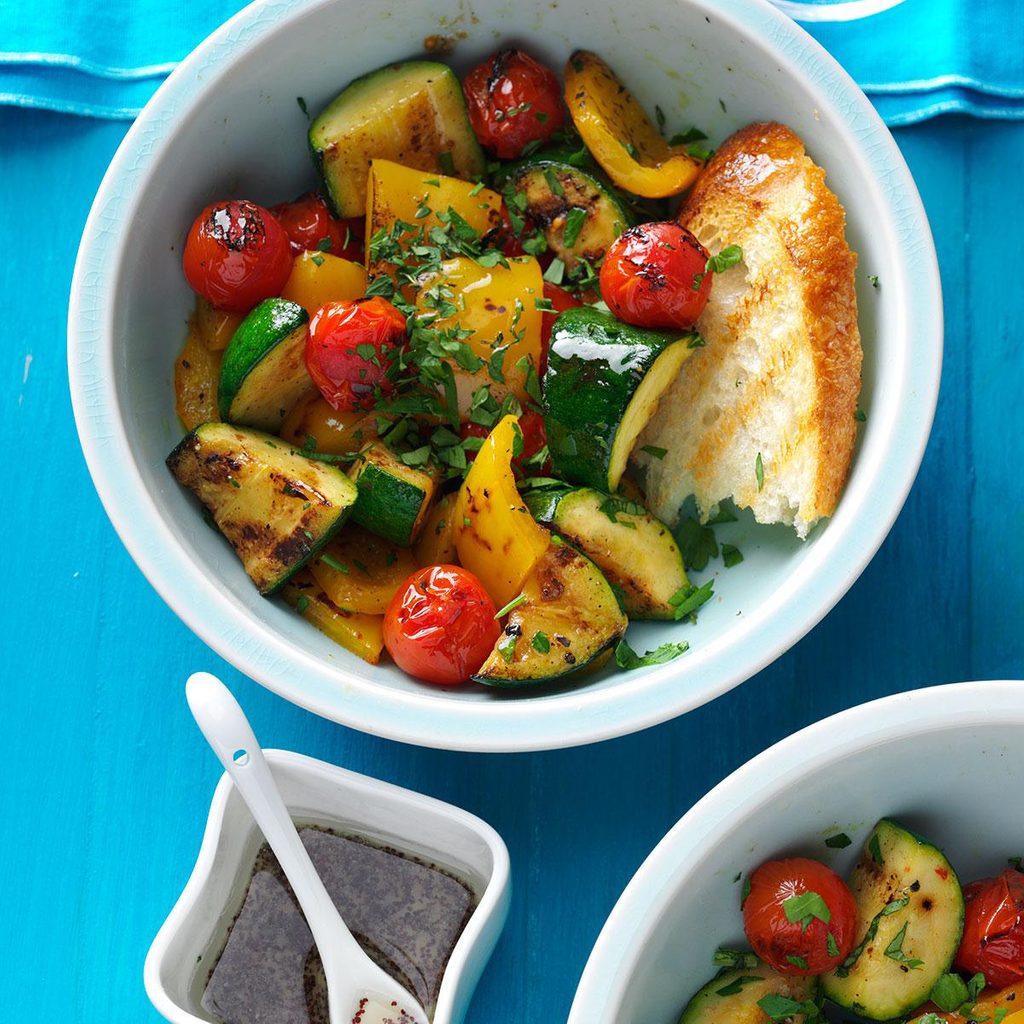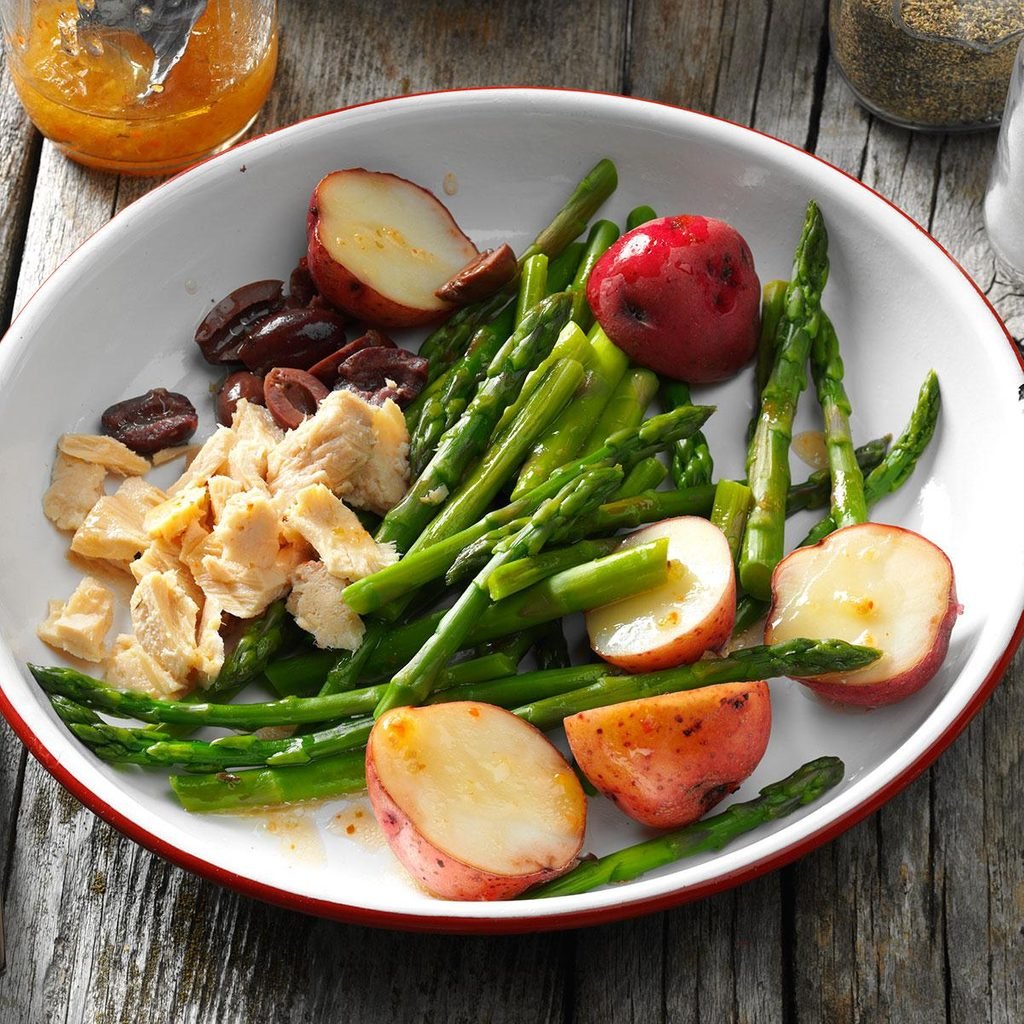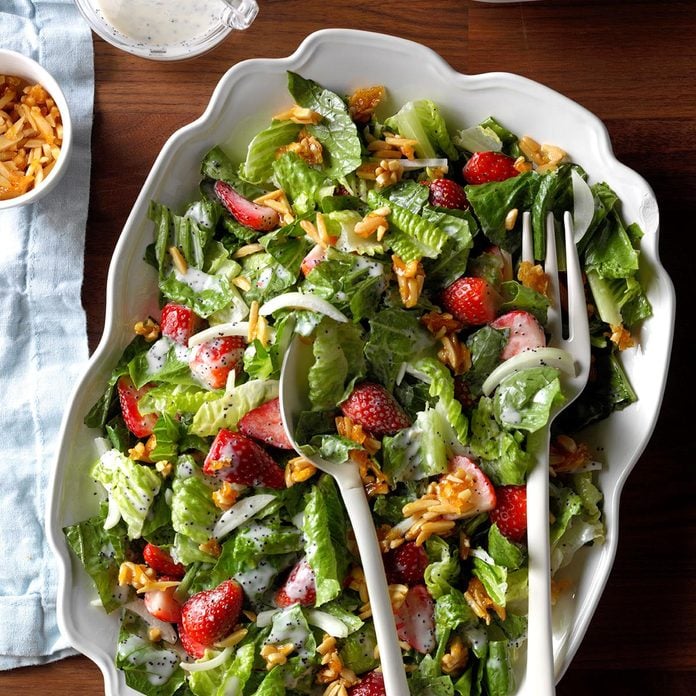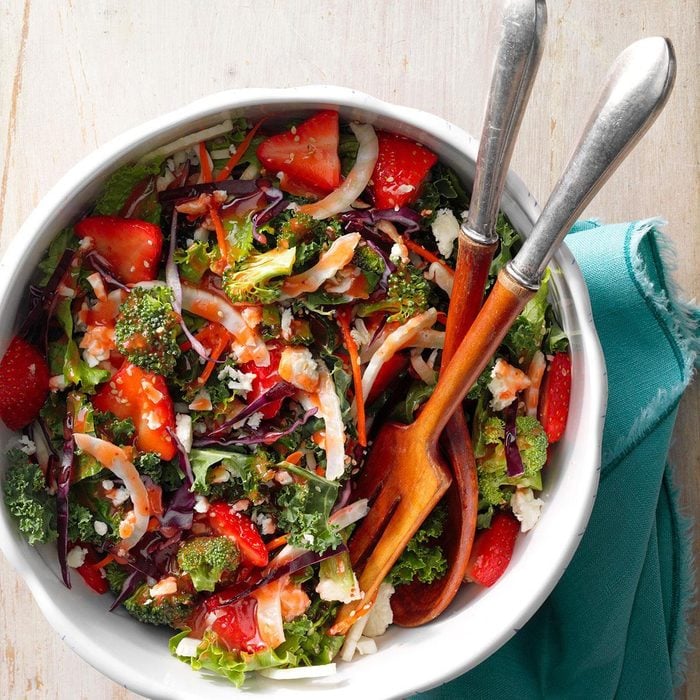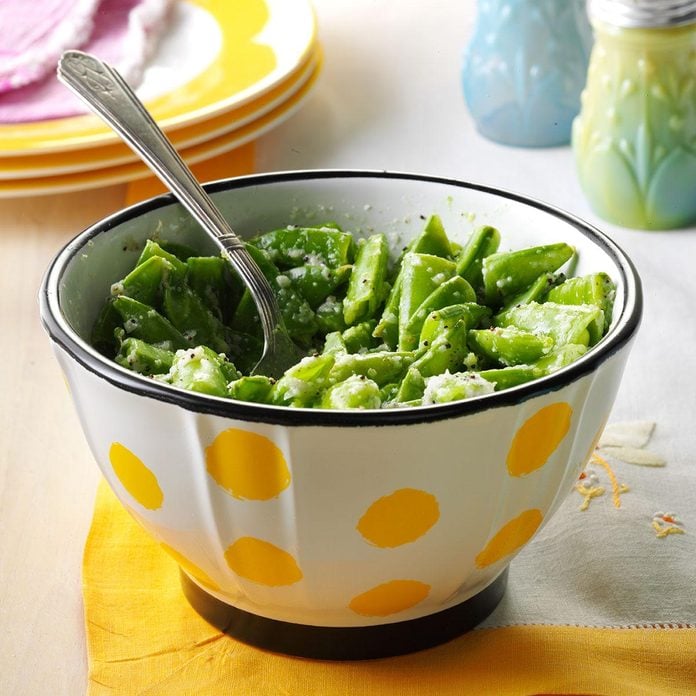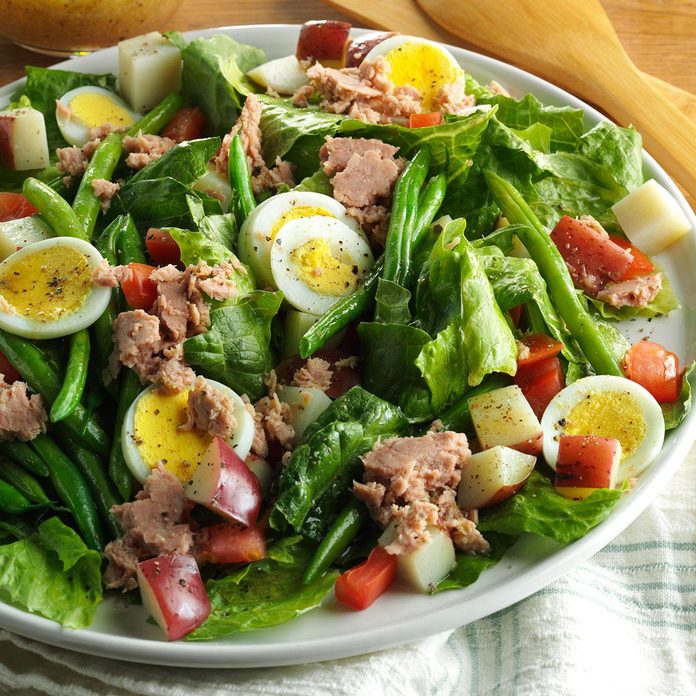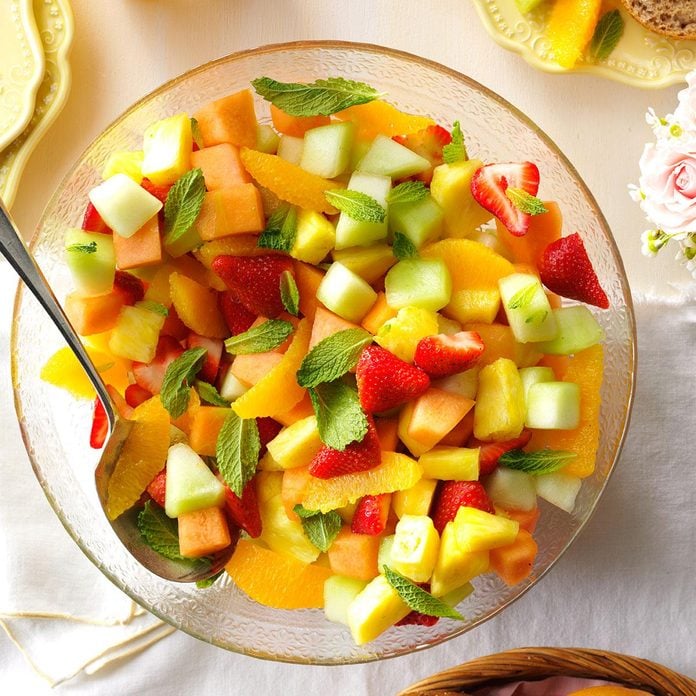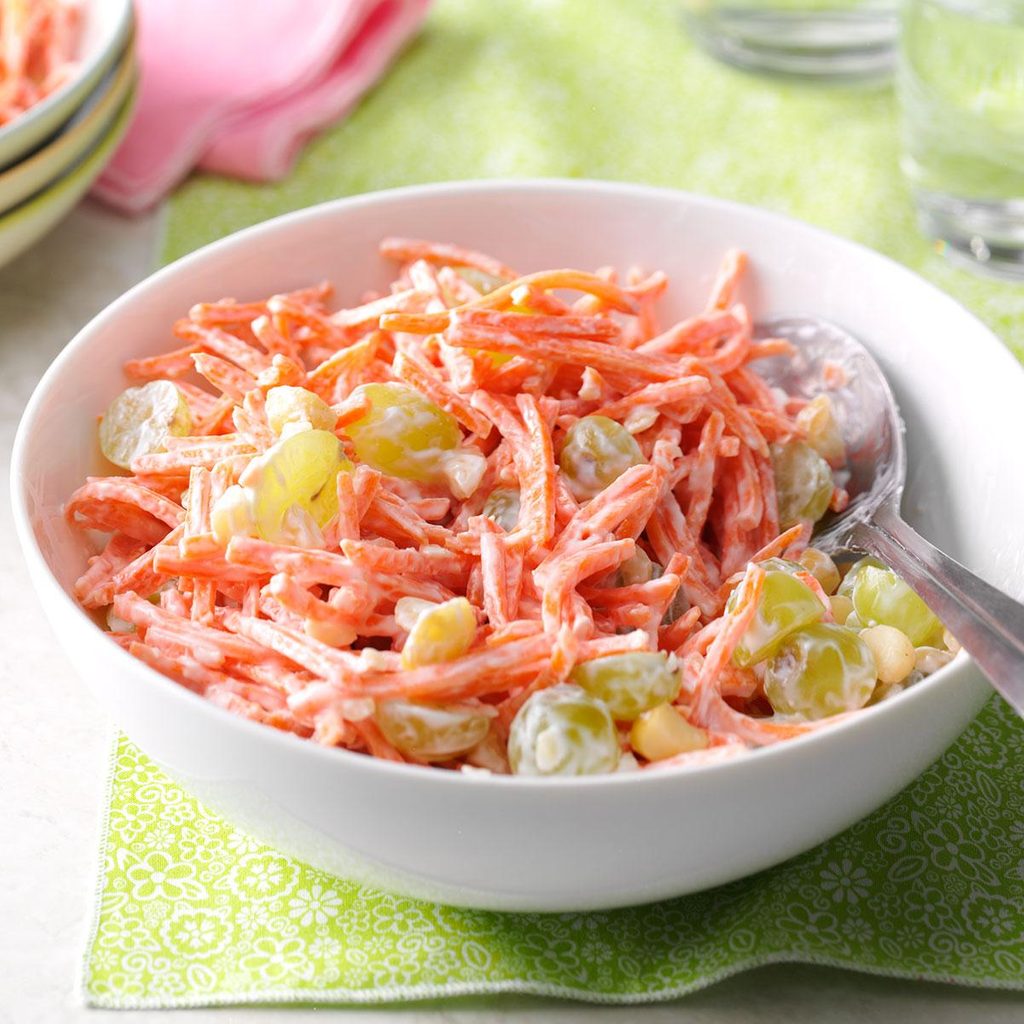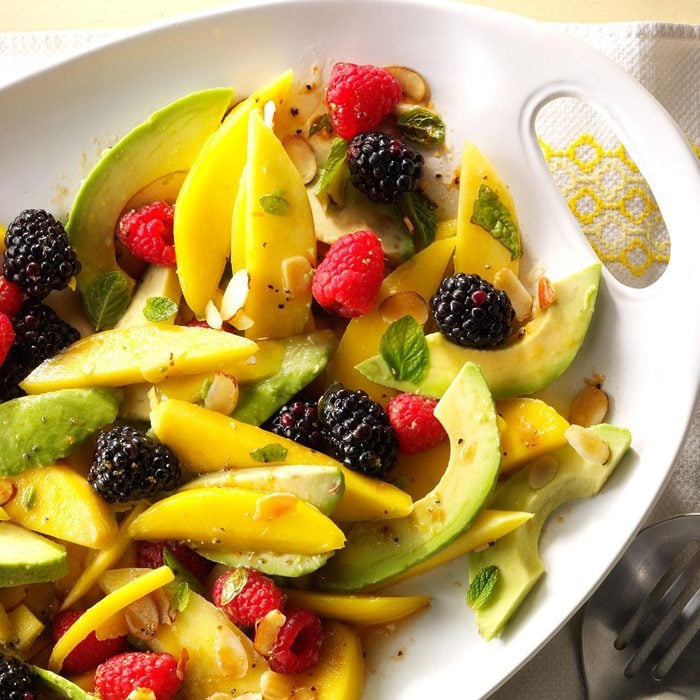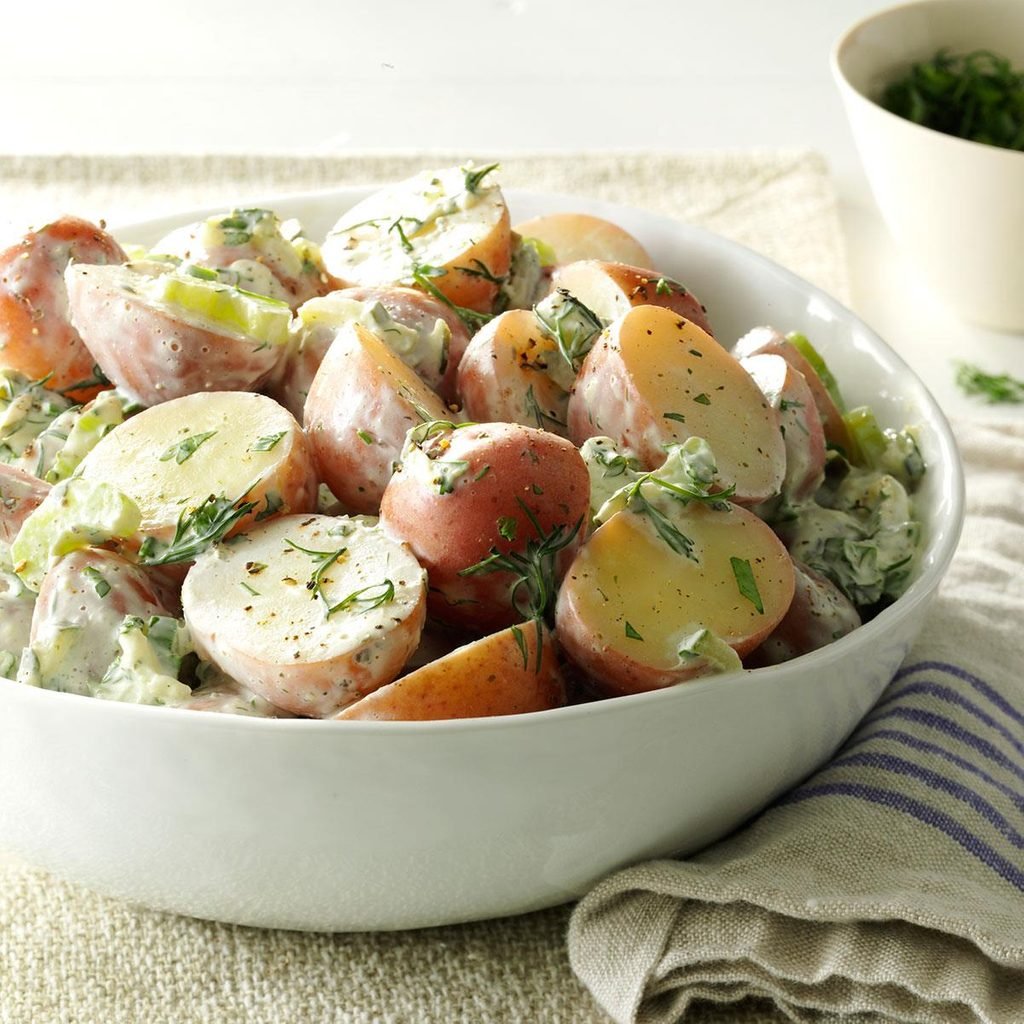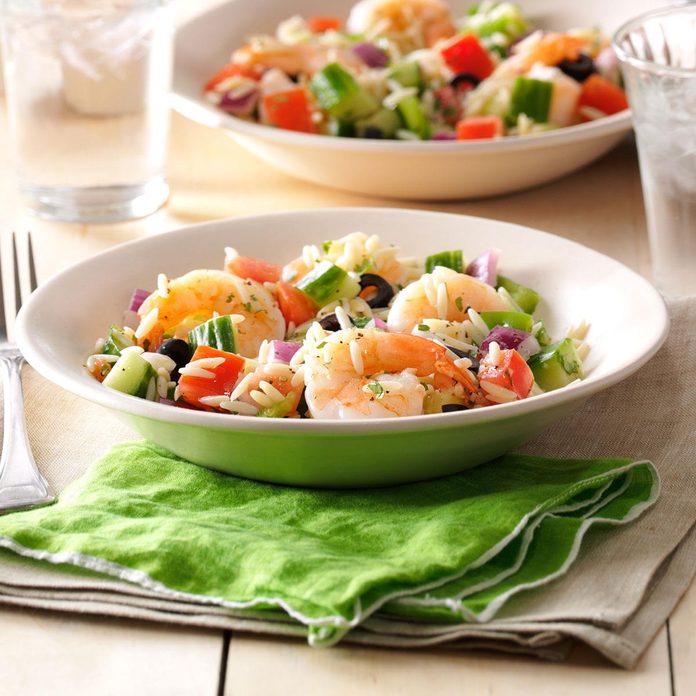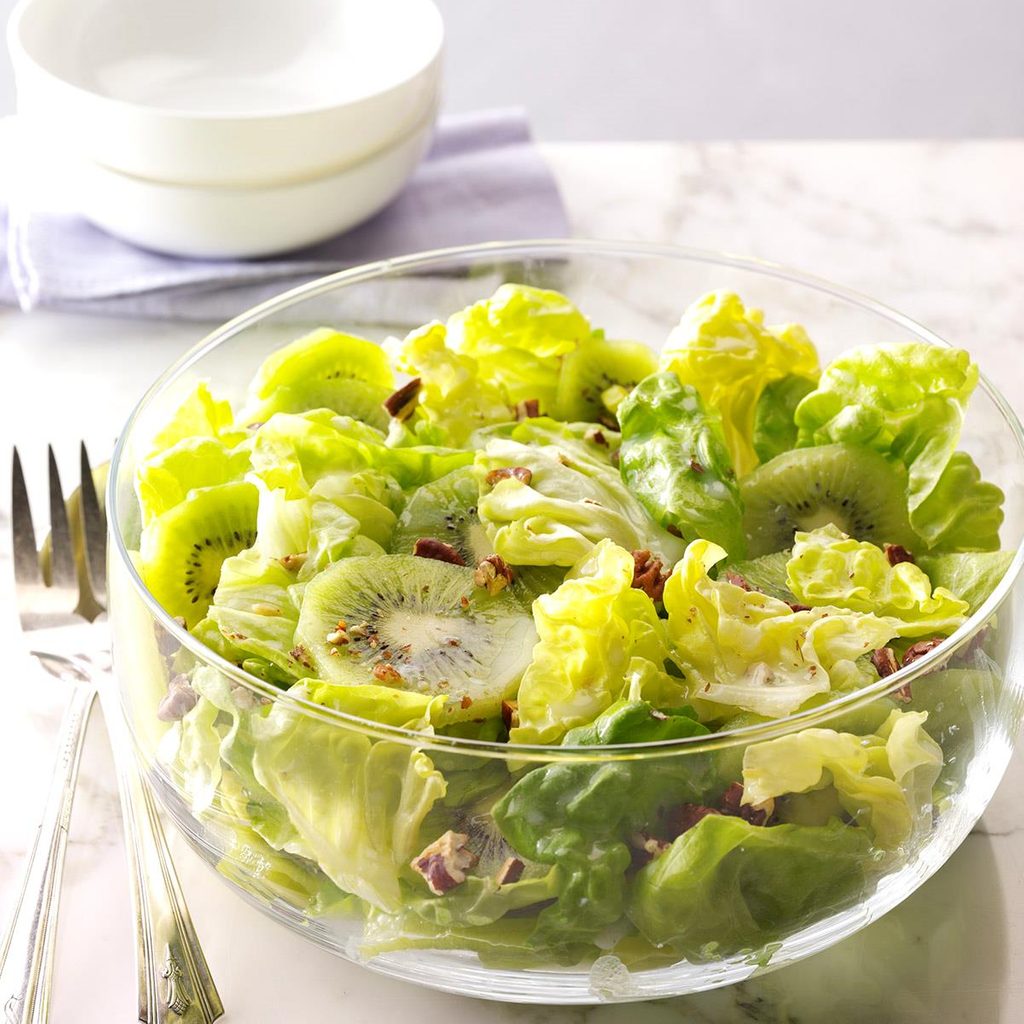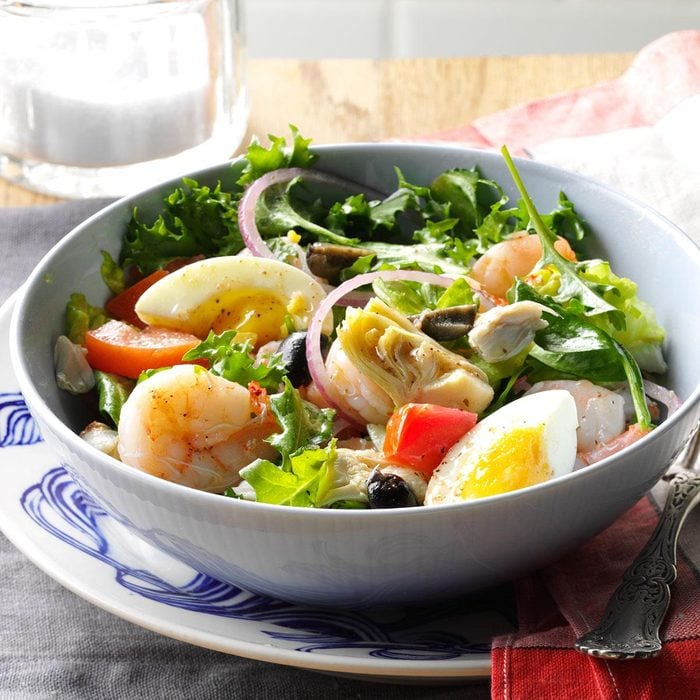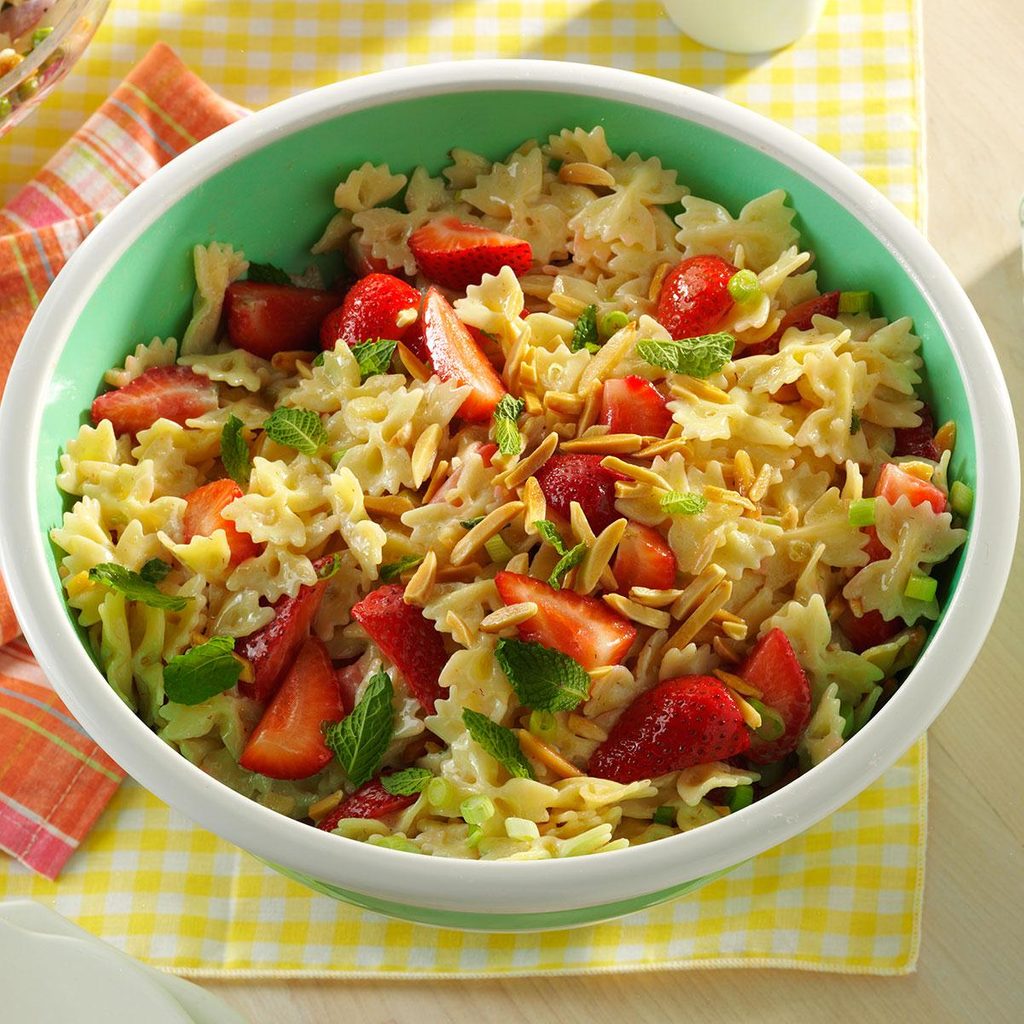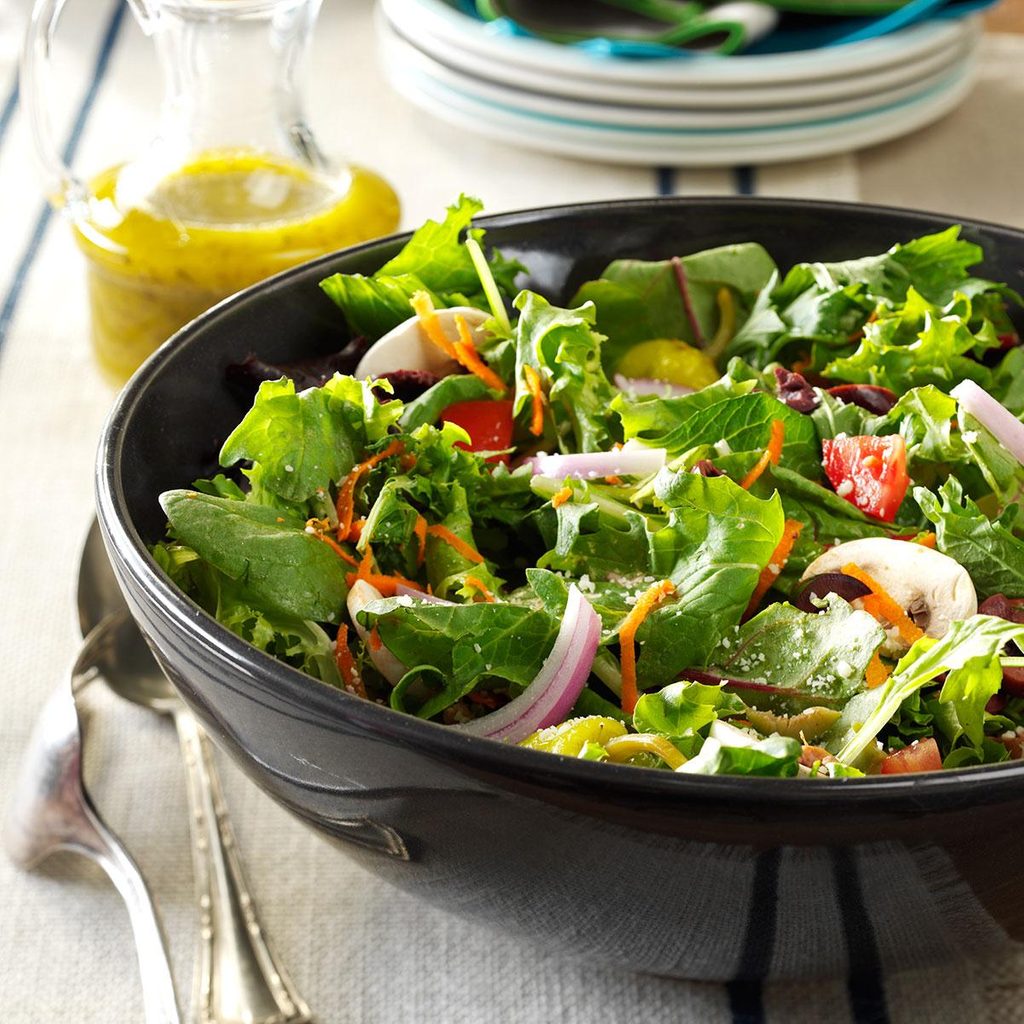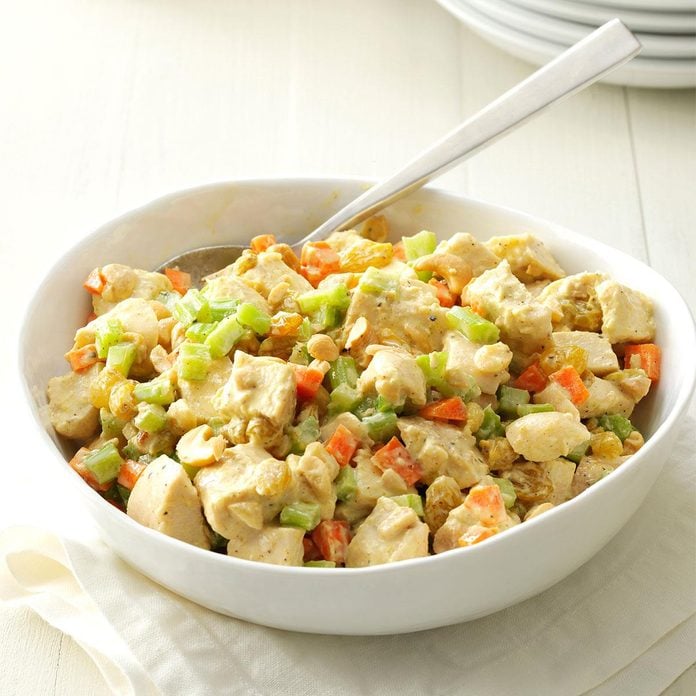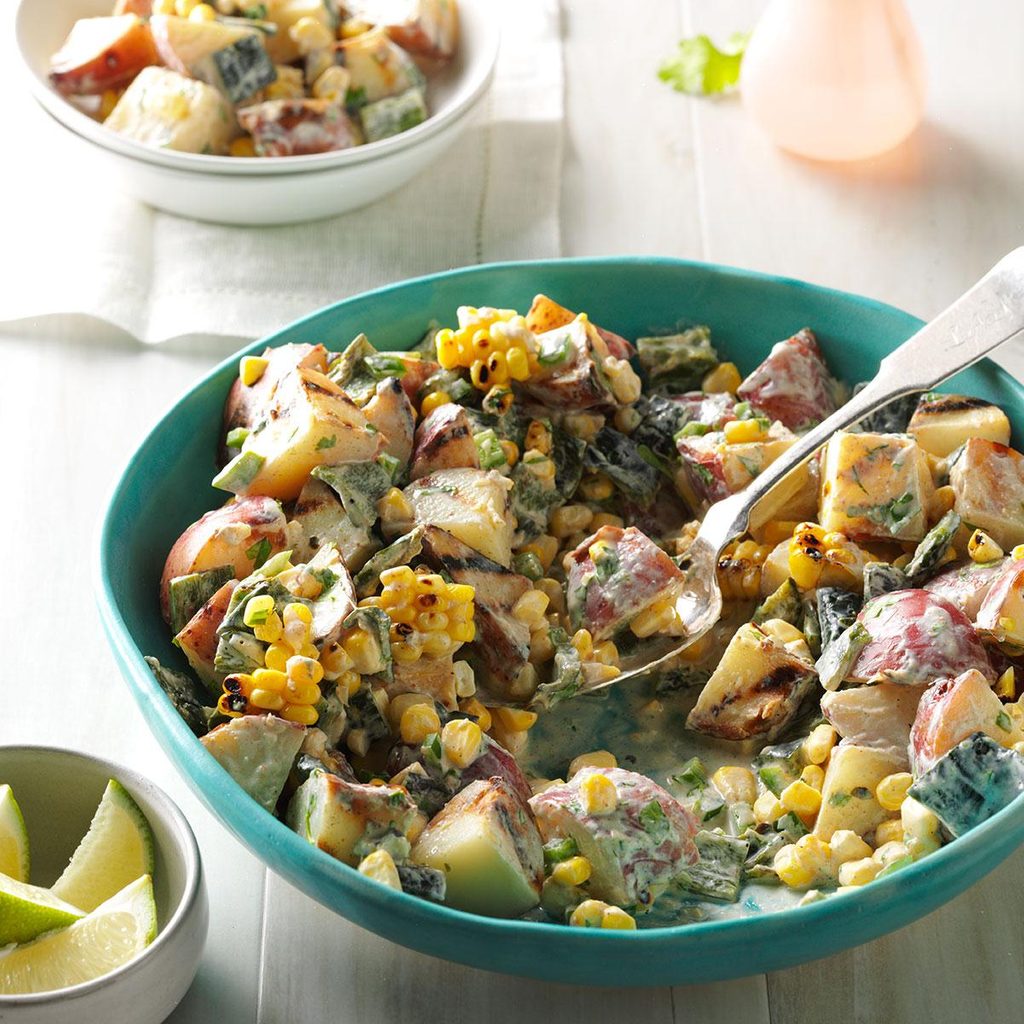Balsamic Green Bean Salad
Serve up those green beans in a whole new way–with a green bean salad recipe! The tangy flavors and crunch of these balsamic green beans complement any special meal or holiday potluck. —Megan Spencer, Farmington Hills, Michigan
Get Recipe
Speaking of bright salad ideas, you'll appreciate this 7-day
salad meal plan, too.
Strawberry Arugula Salad with FetaThe combination of peppery arugula, sweet strawberries and robust feta cheese may sound unusual, but one bite wins over taste buds.—Carala Horne, Meridian, Mississippi
Apricot FluffWhen we were young mothers, I asked my best friend if she had a recipe for an easy ambrosia salad that I could take to a cookout later that evening. She shared this recipe with me and it's become a must-have at every barbecue I attend. It's sublime with peaches and peach gelatin, too. —Melissa Meinke, Fawn Grove, Pennsylvania
Kansas Cucumber SaladCucumbers are my very favorite garden vegetable, so I use this recipe often. I got it from a friend years ago. I've heard this refreshing dish keeps very well in the refrigerator, but it goes so fast around our house, I've never found out for myself. —Karen Ann Bland, Gove, Kansas
Strawberry-Blue Cheese Steak SaladAt lunch one day, a friend told me about a steak salad she'd had at a party. It sounded so fantastic I had to try it for myself. My family would eat it nonstop if we could. Can't seem to get enough of that tangy dressing! —Alma Winberry, Great Falls, Montana
Spring Pea & Radish SaladWinters can be very long here in New Hampshire. I always look forward to the first veggies of spring and making some lighter dishes like this fresh salad. —Jolene Martinelli, Derry, New Hampshire
Grape SaladEveryone raves when I bring this refreshing, creamy grape salad to potlucks. For a special finishing touch, sprinkle it with brown sugar and pecans. —Marge Elling, Jenison, Michigan
Shrimp Avocado SaladThe delicious taste and smooth texture of avocados and the crisp shrimp salad create a heavenly combination. Serve it as a cool and satisfying lunch or a light, quick and easy dinner. —Teri Rasey, Cadillac, Michigan
Garden-Fresh Chef SaladFor much of the year, I can use my garden's produce when I make this cool salad. In spring, the salad mix and radishes come from my crop. In summer, I use the tomatoes, cabbage and carrots. What a good feeling! —Evelyn Gubernath, Bucyrus, Ohio
Red Potato Salad DijonMy mother made the best warm potato salad, and now it's a tradition at all of our tables. Sometimes I use Yukon Gold potatoes to make it even prettier. —Patricia Swart, Galloway, New Jersey
Colorful Cornbread SaladWhen my garden comes in, I harvest the veggies for potluck dishes. I live in the South, and we think bacon and cornbread make everything better, even salad! —Rebecca Clark, Warrior, Alabama
Chicken & Onion Caesar SaladMy Caesar with grilled chicken is a healthier alternative to heavy meat and potatoes dishes. After grilling the kabobs, we serve them family style. —Melissa Adams, Tooele, Utah
Citrus-Tarragon Asparagus SaladI created this colorful salad when I was invited to a friend's Easter egg hunt and potluck picnic. The guests were begging to get my recipe. Let the flavors infuse overnight for the best taste. —Cheryl Magnuson, Apple Valley, California
Grilled Vegetable Salad with Poppy Seed DressingMy Italian-style grilled veggies have a wonderful sweet and sour dressing. Best of all, I pick the fresh veggies and herbs from my garden. —Laura Mast, Defiance, Ohio
Asparagus Nicoise SaladI’ve used my Nicoise as an appetizer or a main-dish salad, and it’s a winner every time I put it on the table. Here’s to a colorful, make-ahead salad! —Jan Meyer, St. Paul, Minnesota
Strawberry Salad with Poppy Seed DressingMy family is always happy to see this fruit and veggie salad on the table. If strawberries aren’t available, substitute mandarin oranges and dried cranberries. —Irene Keller, Kalamazoo, Michigan
Kale Slaw Spring SaladMy parents and in-laws are retired and like to spend winters in Florida. This tangy spring salad welcomes the snowbirds back for our Easter celebration! —Jennifer Gilbert, Brighton, Michigan
Fresh Sugar Snap Pea SaladWe found fresh sugar snap peas at our town's farmers market. They make a cheerful salad with a tangy dressing. —Courtney Stultz, Weir, Kansas
Quick Nicoise SaladLike the French, I pack my classic Nicoise salad with veggies, potatoes, tuna and eggs. Cooking the potatoes and beans together helps the dish come together fast. —Valerie Belley, St. Louis, Missouri
Fresh Fruit BowlThe glorious colors of the fruit make this a festive salad. Slightly sweet and chilled, it makes a nice accompaniment to a grilled entree. —Marlon Kirst, Troy, Michigan
Pina Colada Carrot SaladThis sweet carrot salad, with pina colada yogurt, macadamia nuts and green grapes, has a tropical theme. Just mix and chill out. —Emily Tyra, Milwaukee, Wisconsin
Avocado Fruit Salad with Tangerine VinaigretteOn long summer days when we just want to relax, I make a cool
fruit salad with avocado, berries and mint. The tangerine dressing is refreshingly different. —Carole Resnick, Cleveland, Ohio
Tzatziki Potato SaladMy son has an egg allergy, so this potato salad is perfect for him. For extra color, add radish, apple and garlic dill pickles. —Cindy Romberg, Mississauga, Ontario
Garlic Shrimp & Orzo SaladI enjoy cold pasta salads and rice salads, so I decided to make one with orzo, a rice-shaped pasta. Feel free to add other favorite veggies—like asparagus and green beans—and serve with rolls or pita bread.—Valonda Seward, Coarsegold, California
Fresh Broccoli Salad with LemonThe slightly sweet flavor of this salad's dressing is a great contrast to the rich bacon. You can substitute cauliflower for the broccoli if you prefer. —Janet Roth, Tempe, Arizona
Honey-Pecan Kiwi SaladThis dish won second place in a summer salad recipe feature published in our local newspaper. But it takes first place with my family, always happy to try my new creations. —Marla Arbet, Kenosha, Wisconsin
Cioppino-Mixed Green SaladLiving in California, the "salad bowl" of the United States, I’m inspired to cook nutritious meals like cioppino. Whenever my friends and I get together, this salad—a spin on the classic seafood stew—is the top request. —Cleo Gonske, Redding, California
Psst! Take a look at our guide to the
best salad bowls.
Strawberry Pasta SaladBow tie pasta with strawberries makes a refreshing salad, especially with a little chopped mint. I multiply it for brunches, potlucks, even tailgates. —Barbara Lento, Houston, Pennsylvania
Italian Salad with Lemon VinaigretteFor an Italian twist on salad, I mix greens with red onion, mushrooms, olives, pepperoncini, lemon juice and Italian seasoning. Add tomatoes and carrots if you'd like. —Deborah Loop, Clinton Township, Michigan
Cashew-Curry Chicken SaladMy husband and I fell hard for the curried chicken salad from our grocery store deli, and I knew I could find a way to make something similar. This greek yogurt chicken salad has become one of our favorites to take on trips to the beach. —Janine Cooper-Moren, Portland, Oregon
Grilled Southwestern Potato SaladThis salad is perfect with a grilled steak for a Tex-Mex meal, and most of it can even be prepared out in the backyard. Poblanos and cayenne make it pop. —Johnna Johnson, Scottsdale, Arizona
